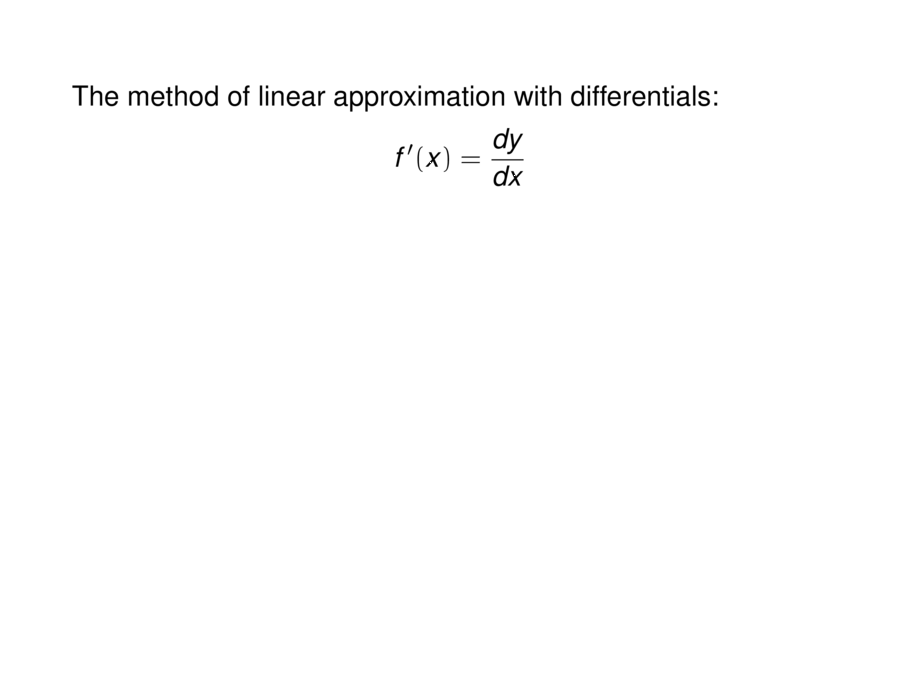



































































































132/142
\begin{frame}
\frametitle{Linear Approximation and Differentials}
The method of linear approximation with differentials:
\begin{talign}
f'(x) = \frac{dy}{dx}
\end{talign}
\pause
We view $dx$ and $dy$ as variables, then:
\begin{talign}
dy = f'(x)\; dx
\end{talign}
\pause
So $dy$ depends on the value of $x$ and $dx$.
\medskip\pause
\begin{minipage}{.43\textwidth}
\begin{center}
\scalebox{.8}{
\begin{tikzpicture}[default,baseline=1cm]
\def\diabordery{.7cm}
\diagram{-0.5}{4}{-.5}{4}{1}
\diagramannotatez
\begin{scope}[ultra thick]
\draw[cgreen,ultra thick] plot[smooth,domain=-.5:3,samples=200] function{(x-1)**2};
\tangent{1.5cm}{2.1cm}{pow(\x-1,2)}{1.5}
\node[include=cred] (a) at (1.5,.25) {};
\draw[gray] (a) -- node [at end,below,black] {$x$} +(0,-.5);
\draw[gray] (3,4) -- (3,-.25);
\draw[gray,decorate,decoration={brace,amplitude=5pt,mirror,raise=2pt}] (1.5,-.5) -- node[below,black,yshift=-2mm] {$\Delta x = dx$} (3,-.5);
\draw[cred,decorate,decoration={brace,amplitude=5pt,mirror,raise=10pt}] (3,.25) -- node[right,black,xshift=6mm] {$dy$} (3,1.75);
\draw[cgreen,decorate,decoration={brace,amplitude=5pt,mirror,raise=4pt}] (3,.25) -- node[right,black,xshift=4mm] {$\Delta y$} (3,4);
\end{scope}
\end{tikzpicture}
}
\end{center}
\end{minipage}
\begin{minipage}{.56\textwidth}
\begin{itemize}
\pause
\item $x =$ point of linearization
\pause\smallskip
\item $\Delta x = dx$ is the distance from $x$\\
\pause\smallskip
\item $dy =$ change of $y$ of tangent
\pause\smallskip
\item $\Delta y = $ change of $y$ of curve~$f$
\end{itemize}
\pause
As formulas:
\begin{itemize}
\pause
\item $dy = f'(x)\; dx$
\pause
\item $\Delta y = f(x +\Delta x) - f(x)$
\end{itemize}
\end{minipage}
\end{frame}

